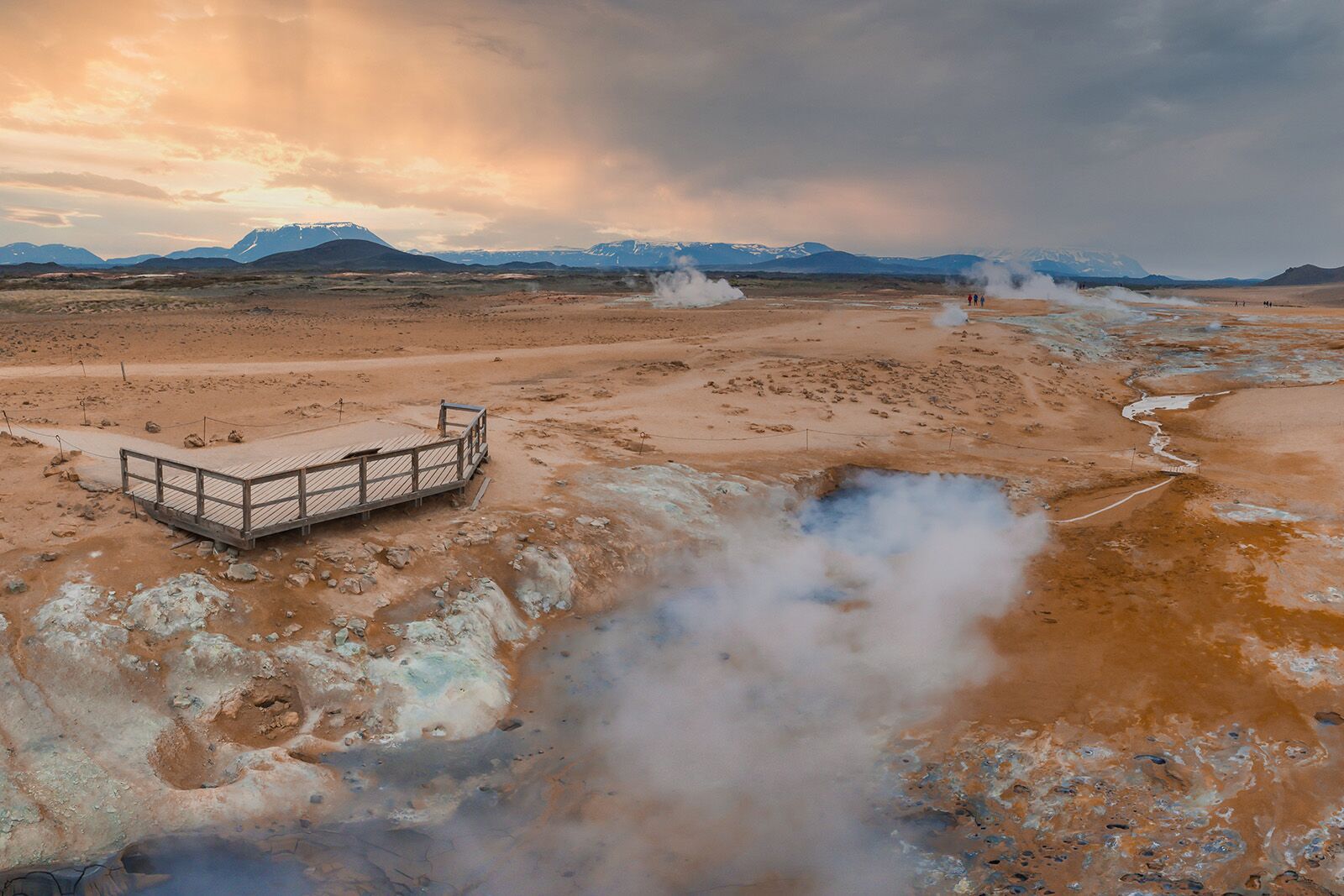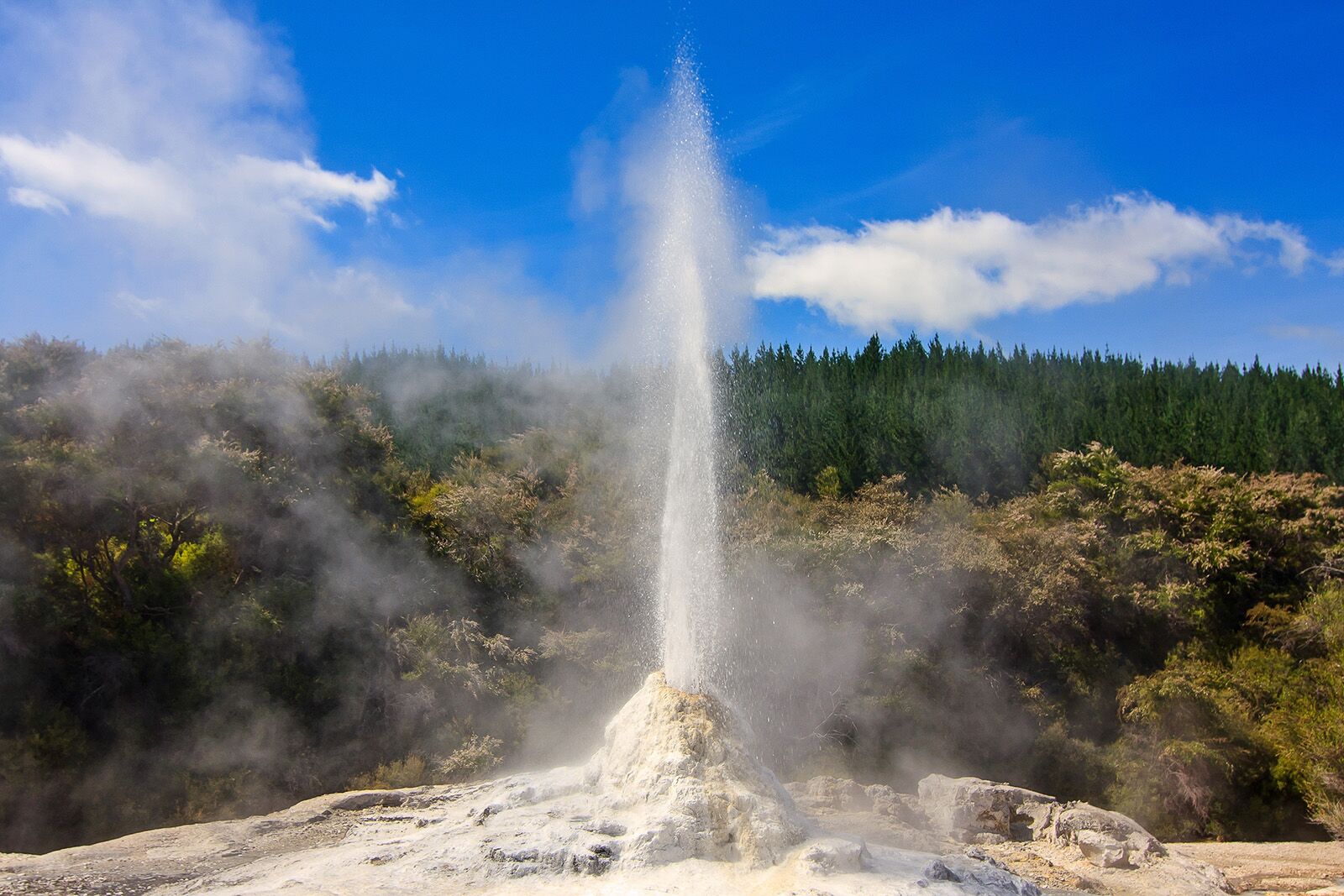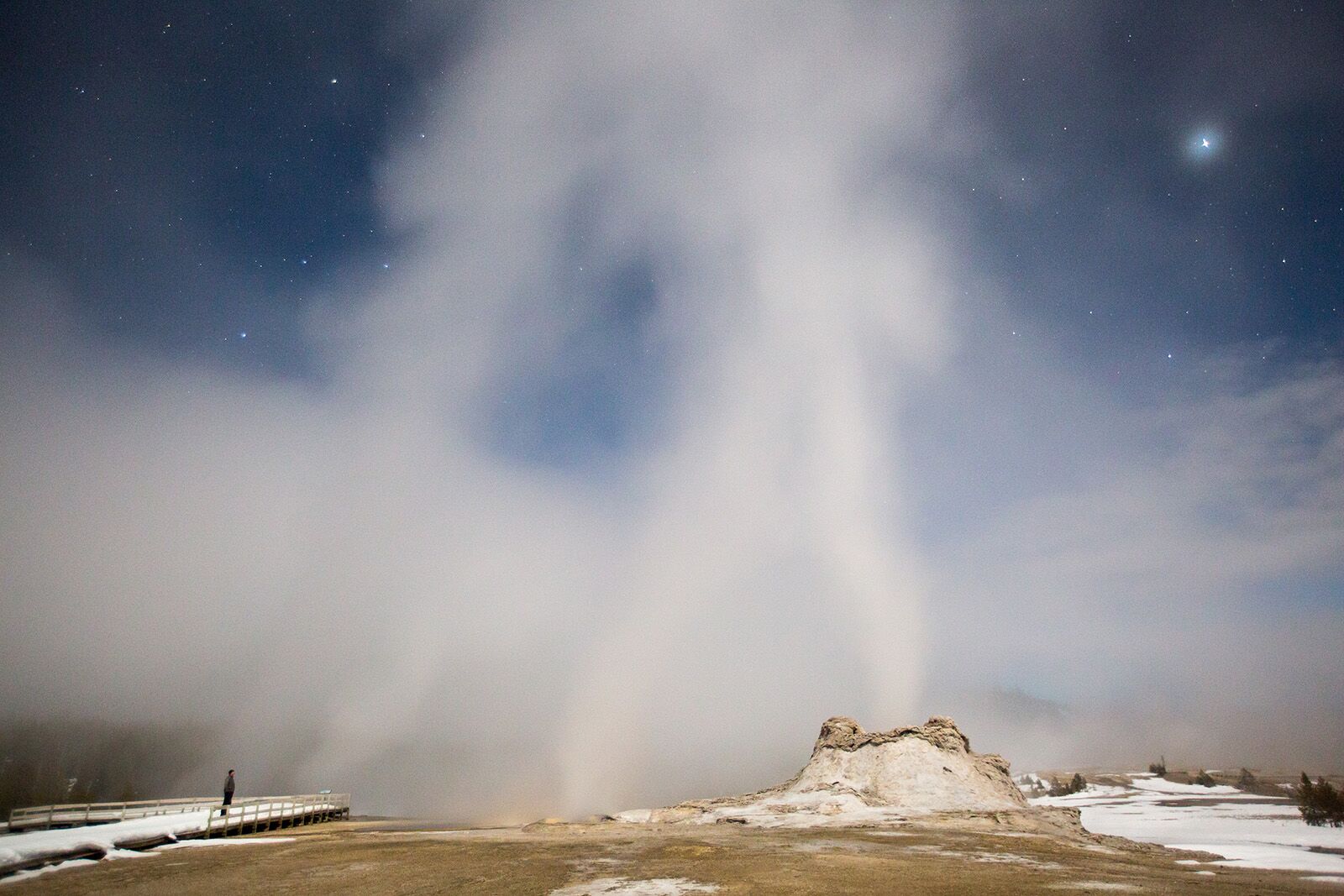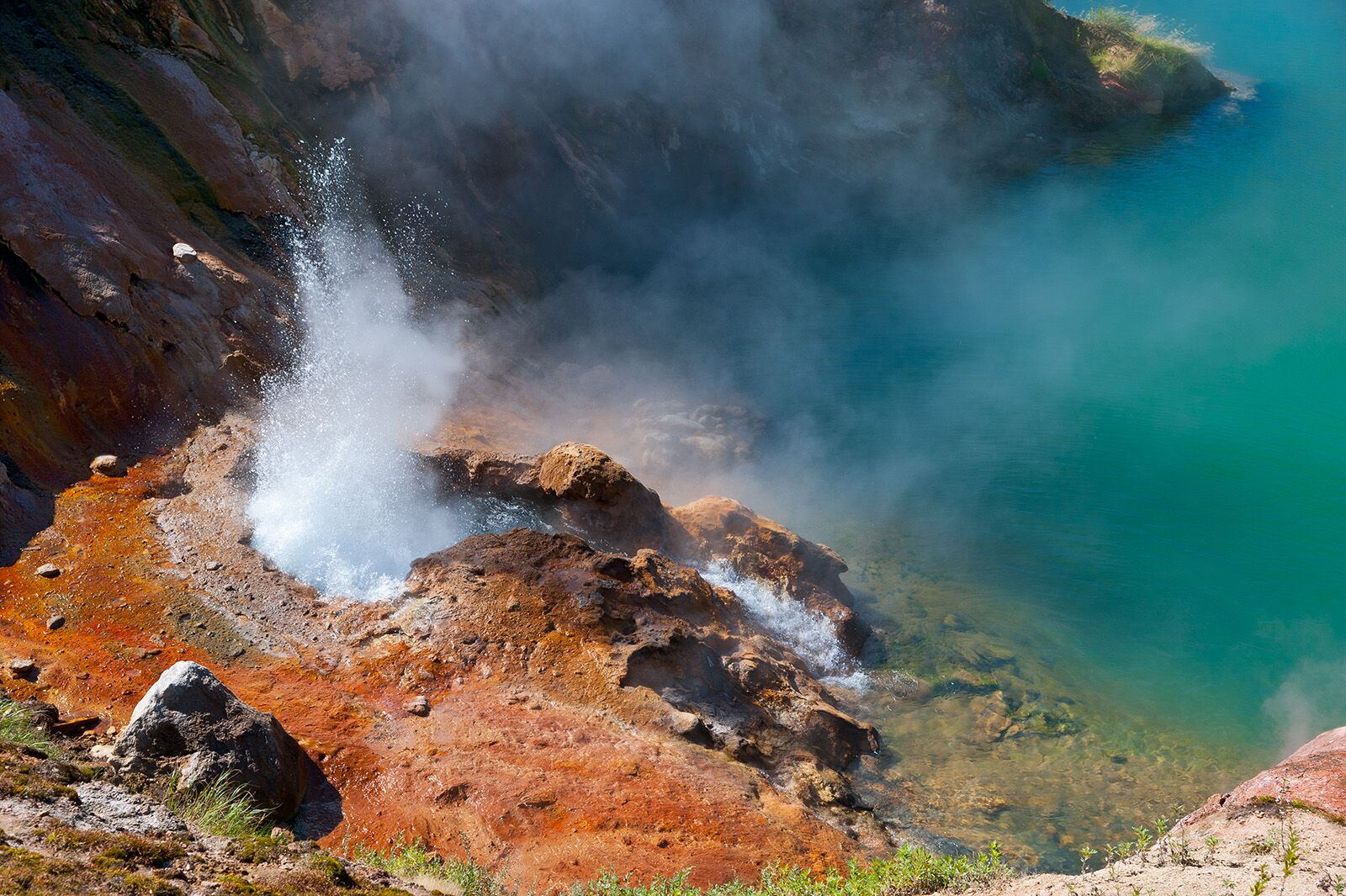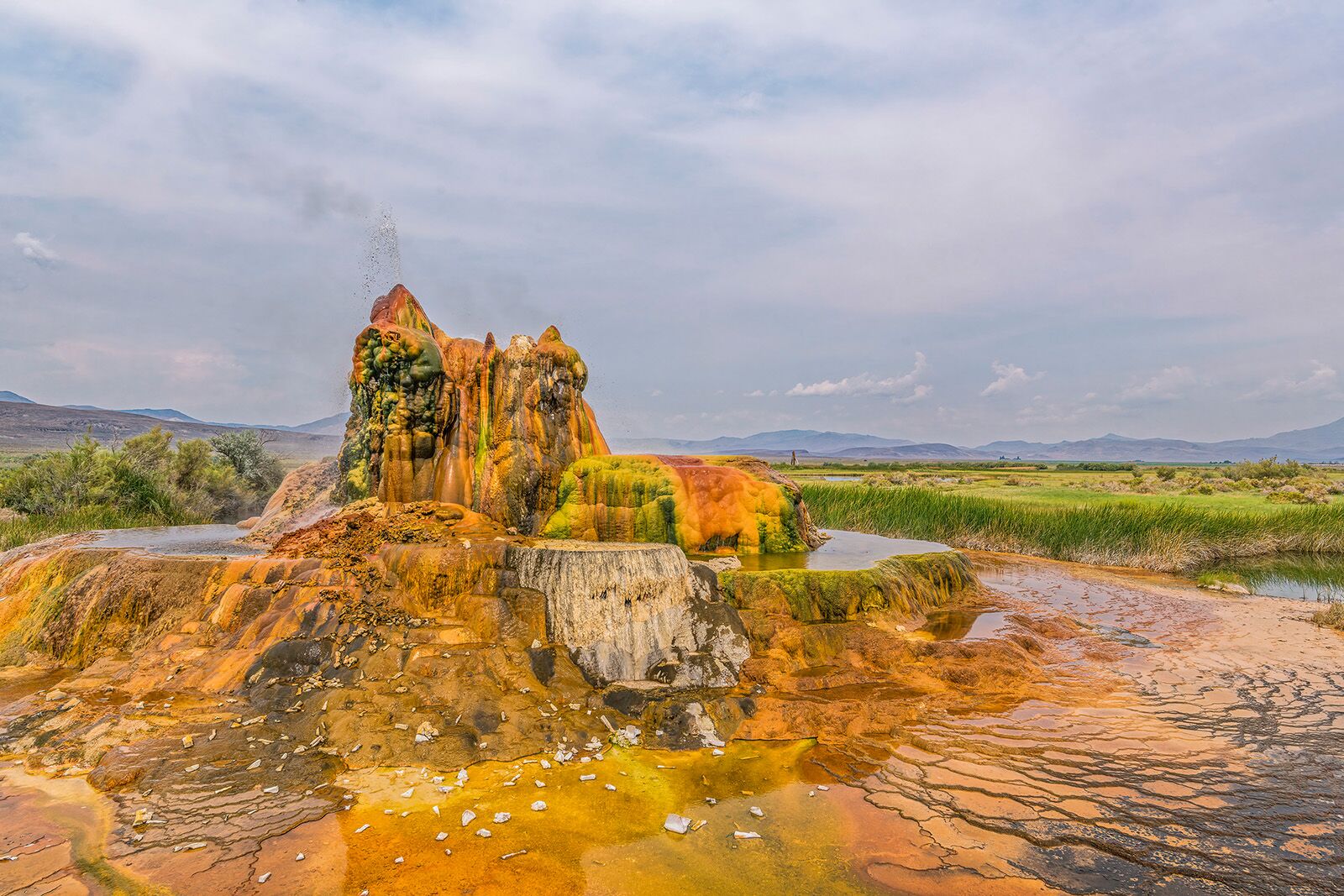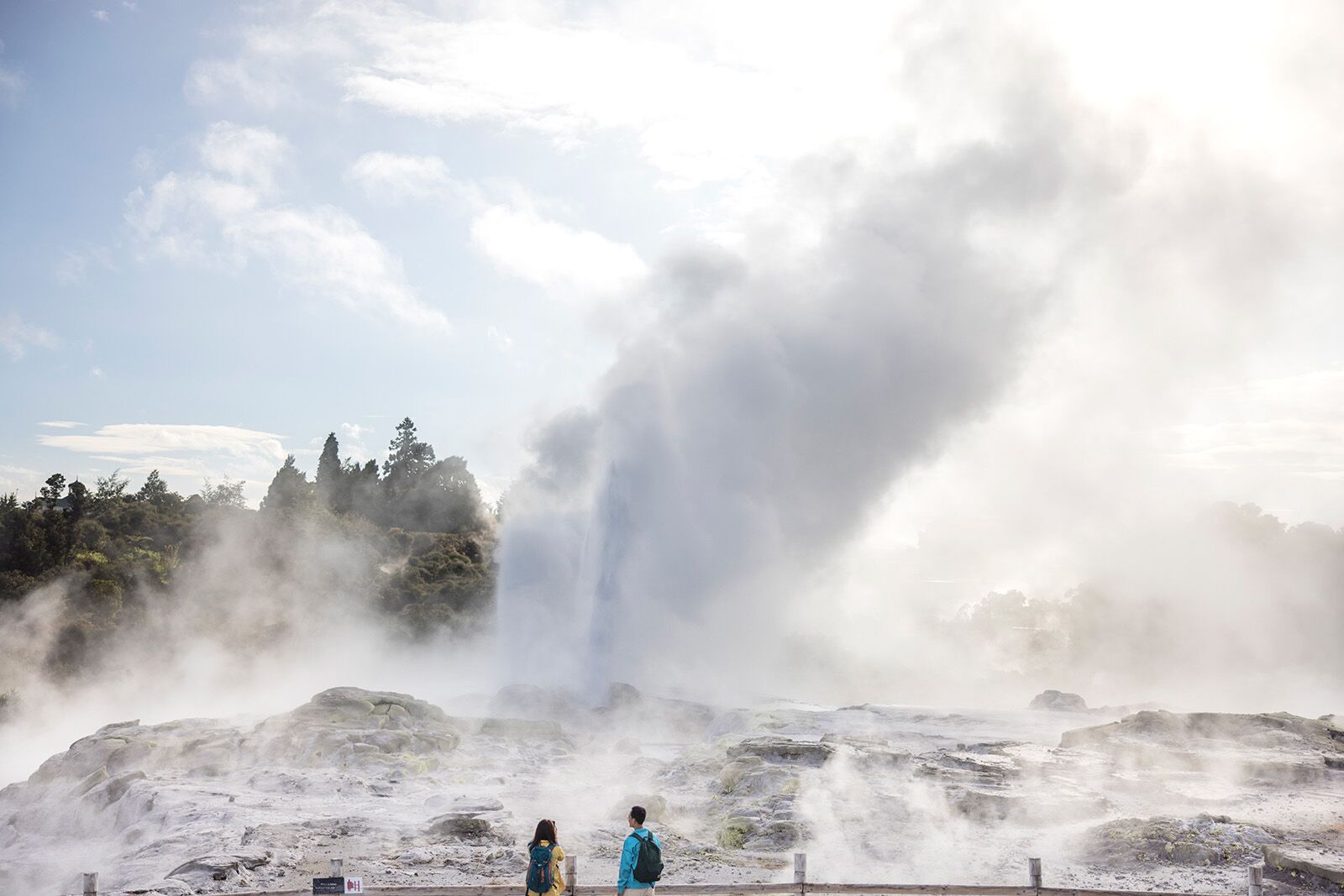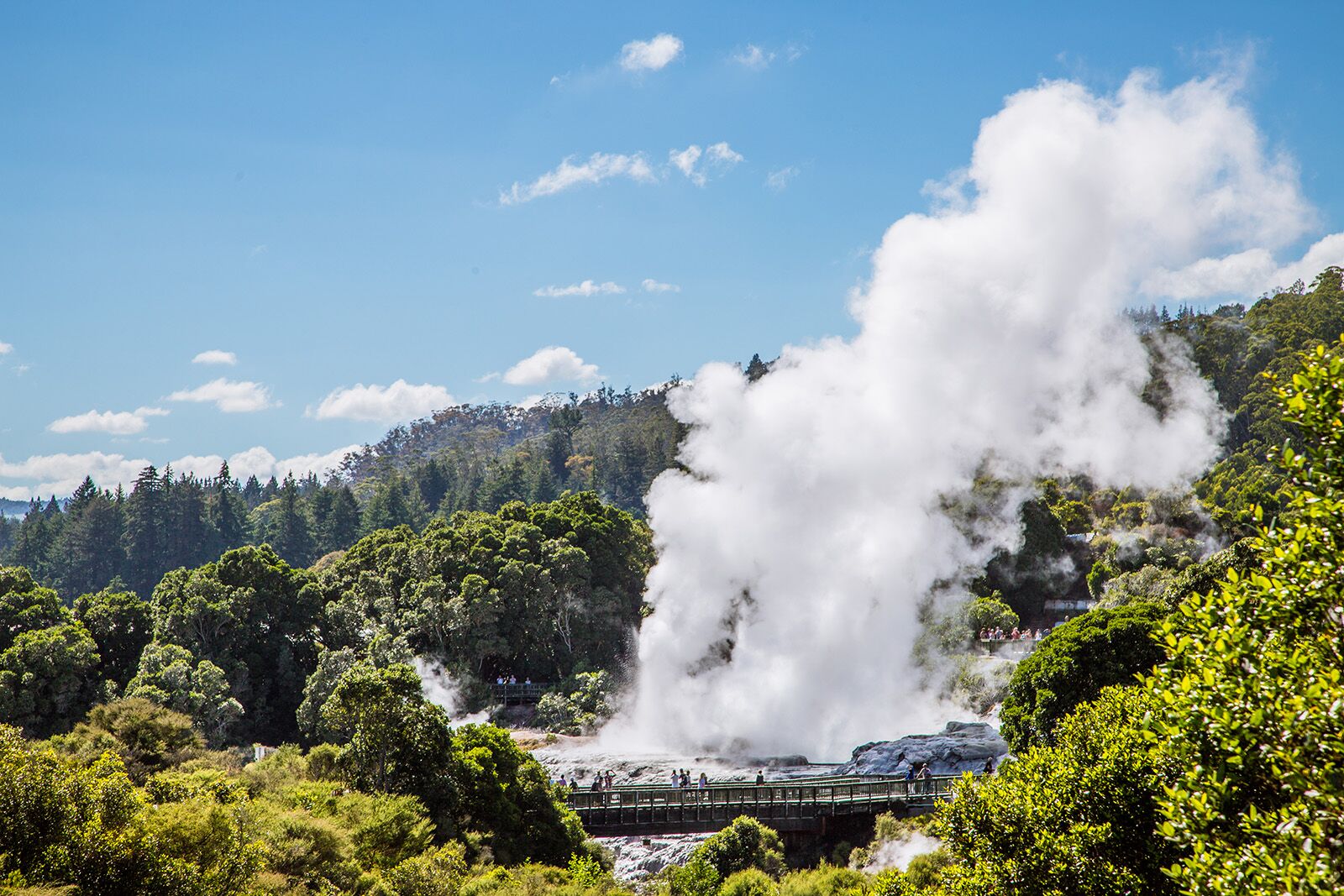Geysers are among nature’s most breathtaking spectacles, combining raw geothermal power with mesmerizing beauty. Found in tectonically active regions, these hot springs erupt with jets of boiling water and steam, creating dramatic plumes against landscapes that range from volcanic valleys to snow-covered plains. While each geyser has its own unique rhythm and intensity, all share a sense of mystery that has drawn explorers, scientists, and tourists for centuries. This collection of the world’s most visually stunning geysers highlights both famous and lesser-known geothermal marvels that you can see in person (with varying degrees of difficulty), from the reliable Old Faithful in Yellowstone to the remote, otherworldly geyser fields of Russia’s Kamchatka Peninsula.


The World’s Most Stunning Geysers You Can Visit: A Visual Guide
Old Faithful: Yellowstone National Park
There are approximately one thousand geysers around the world, and about half of them are in Yellowstone National Park. Old Faithful stands out as the most iconic—and most visited—geyser, not just in the park, but globally. Named in 1870 for its predictability, Old Faithful erupts about every 90 minutes, sending water soaring between 100 and 180 feet high. Each eruption releases up to 8,400 gallons of boiling water, making it a spectacular and reliable attraction for visitors for centuries.
Nearest City: West Yellowstone, Montana
Accessibility: Very accessible via a short, easy walk from the Old Faithful Visitor Center parking lot. There’s a boardwalk around the geyser for prime viewing.
Stay: Airbnbs near Yellowstone National Park.
Great Geysir: Haukadalur Valley, Iceland
Iceland is a hub of geothermal activity and is home to the geyser that gave its name to all others: the Great Geysir. Records of the area’s geothermal activity date back to 1294, and the term “geysir” was first documented in 1647, specifically to describe the Great Geysir after a period of intense eruptions. Over the centuries, the Great Geysir’s activity has fluctuated, ranging from several daily eruptions to prolonged dormancy. Today, Geysir is mostly inactive, but on rare occasions, it still erupts with water columns reaching up to 230 feet.
Nearest City: Reykjavik
Accessibility: Easily accessible via a paved path from the nearby parking area.
Stay: Airbnbs in Reykjavik.
El Tatio Geyser Field: Atacama Desert, Chile
Located at 13,800 feet in the Andes Mountains, El Tatio is one of the largest and highest-altitude geyser fields in the world. The area boasts more than 80 active geysers and an estimated 400 geothermal manifestations, including hot springs and fumaroles. In the early morning, El Tatio’s geysers create a spectacular cloud of steam rising from the desert floor, which is one of the field’s main attractions.
Nearest City: San Pedro de Atacama
Accessibility: Accessible by vehicle, but requires a long drive from San Pedro and a short walk on a rocky, elevated path around the geyser field.
Steamboat Geyser: Yellowstone National Park
While Old Faithful is Yellowstone’s most famous geyser, it’s not the tallest. That title goes to Steamboat Geyser, the world’s tallest active geyser that’s capable of shooting water up to 300 feet in the air. However, Steamboat is highly unpredictable and can go dormant for extended periods. The geyser is currently in an active phase, with five major eruptions through December 2024, though the timing of eruptions remains erratic.
Steamboat holds the record for the largest active geyser eruptions in the world today, but the most powerful geyser eruption on record belongs to New Zealand’s Waimangu Geyser. From 1900 to 1904, Waimangu produced massive eruptions that reached up to 1,500 feet before going extinct by 1908.
Nearest City: West Yellowstone, Montana
Accessibility: Located along the Norris Geyser Basin Trail, requiring a short walk from the Norris Geyser Basin parking lot.
Lady Knox Geyser: Taupo Volcanic Zone, New Zealand
Lady Knox Geyser was discovered in the early 20th century in a rather unusual way. Inmates from the nearby Waiotapu open prison were washing their clothes in the thermal waters when the soap they used accidentally triggered a chemical reaction that ended up with the geyser erupting. Today, Lady Knox is a popular tourist attraction, with eruptions triggered daily at 10:15 AM by adding chemicals to stimulate the reaction.
Nearest City: Rotorua
Accessibility: Directly accessible from the Wai-O-Tapu parking lot with a short walk to the seating/viewing area.
Strokkur: Haukadalur Valley, Iceland
Neighboring the famed Great Geysir in Iceland’s Haukadular Valley, Strokkur is the region’s most reliable geyser, erupting every few minutes with impressive regularity. Each eruption begins with a steam bubble forming beneath the surface, followed by a burst of water that can reach up to 100 feet. First documented in 1789, Strokkur’s activity has varied over the centuries, but it remains one of Iceland’s most popular natural spectacles.
Nearest City: Reykjavik
Accessibility: Easily accessible with a short walk from the parking area along a well-maintained path.
Castle Geyser: Yellowstone National Park
Castle Geyser, named for the castle-like structure created by its mineral deposits, is one of the oldest geysers in Yellowstone’s Upper Geyser Basin and boasts the largest cone in the area. It erupts on a cycle of 10 to 16 hours, beginning with a 20-minute water phase that can reach heights of up to 90 feet, followed by a loud steam phase. The entire eruption sequence can last up to 40 minutes, offering an impressive display of geothermal power.
Nearest City: West Yellowstone, Montana
Accessibility: Easily accessible by a short walk from Old Faithful, following a trail in the Upper Geyser Basin.
Valley of Geysers: Kamchatka Peninsula, Russia
Located within the Volcanoes of Kamchatka World Heritage Site, the Valley of Geysers is the second largest geyser field in the world with more than 90 active geysers. The site was significantly impacted by a massive mudflow in 2007, which caused widespread damage. However, almost two decades later, most of the geysers have reemerged, and the valley has almost fully recovered. One of the most notable features is the Velikan Geyser, also known as the Giant, which can shoot water columns up to 130 feet high.
Nearest City: Petropavlovsk-Kamchatsky
Accessibility: Highly remote, only accessible by helicopter tours from Petropavlovsk, which include guided walks in the valley.
Fly Ranch Geyser: Washoe County, Nevada
Fly Ranch Geyser has an origin story unlike any of the other geysers on this list. In 1916, a search for irrigation water led to drilling into a geothermal deposit by accident. The project was abandoned until the 1960s, when a geothermal company resumed drilling. Once again, the project was abandoned due to the water not being hot enough, and the well was capped. The pressure of the geothermal deposit eventually caused the seal to break, allowing the flow of mineral-rich water to form the geyser’s distinctive cones and travertine pools. The bright reds and greens that characterize Fly Ranch Geyser are due to the thermophilic algae that thrive on its surface.
Nearest City: Gerlach, Nevada
Accessibility: While on private property, Fly Ranch Geyser can be visited on guided tours managed by the Friends of Black Rock-High Rock. Tours are available from April to October.
Pōhutu Geyser: Whakarewarewa Thermal Valley, New Zealand
Pōhutu is the largest geyser in the Southern Hemisphere and one of the most popular in New Zealand due to its reliability. It erupts up to 20 times a day, reaching heights of up to 100 feet, with each eruption lasting as long as 20 minutes. The geyser is part of the Te Puia Māori Cultural Centre, which also features hundreds of hot springs and several smaller geysers, making it a rich geothermal attraction.
Nearest City: Rotorua
Accessibility: Access requires an admission fee to the Te Puia Cultural Center. The geyser is accessible via a short walk.
The Andernach Geysir: Andernach, Germany
Reaching up to 200 feet in height, the Andernach Geyser is the tallest cold-water geyser in the world. Contrary to the other geysers on this list that are powered by geothermal activity, Andernacht’s eruptions are produced by the buildup of carbon dioxide bubbles in a deep well. The geyser is a popular tourist attraction, with regular eruptions occurring approximately every two hours.
Nearest City: Andernach, Germany
Accessibility: The geyser can be viewed from a ferry departing from the Geyser Center in Andernach. There’s also a dedicated viewing area.




